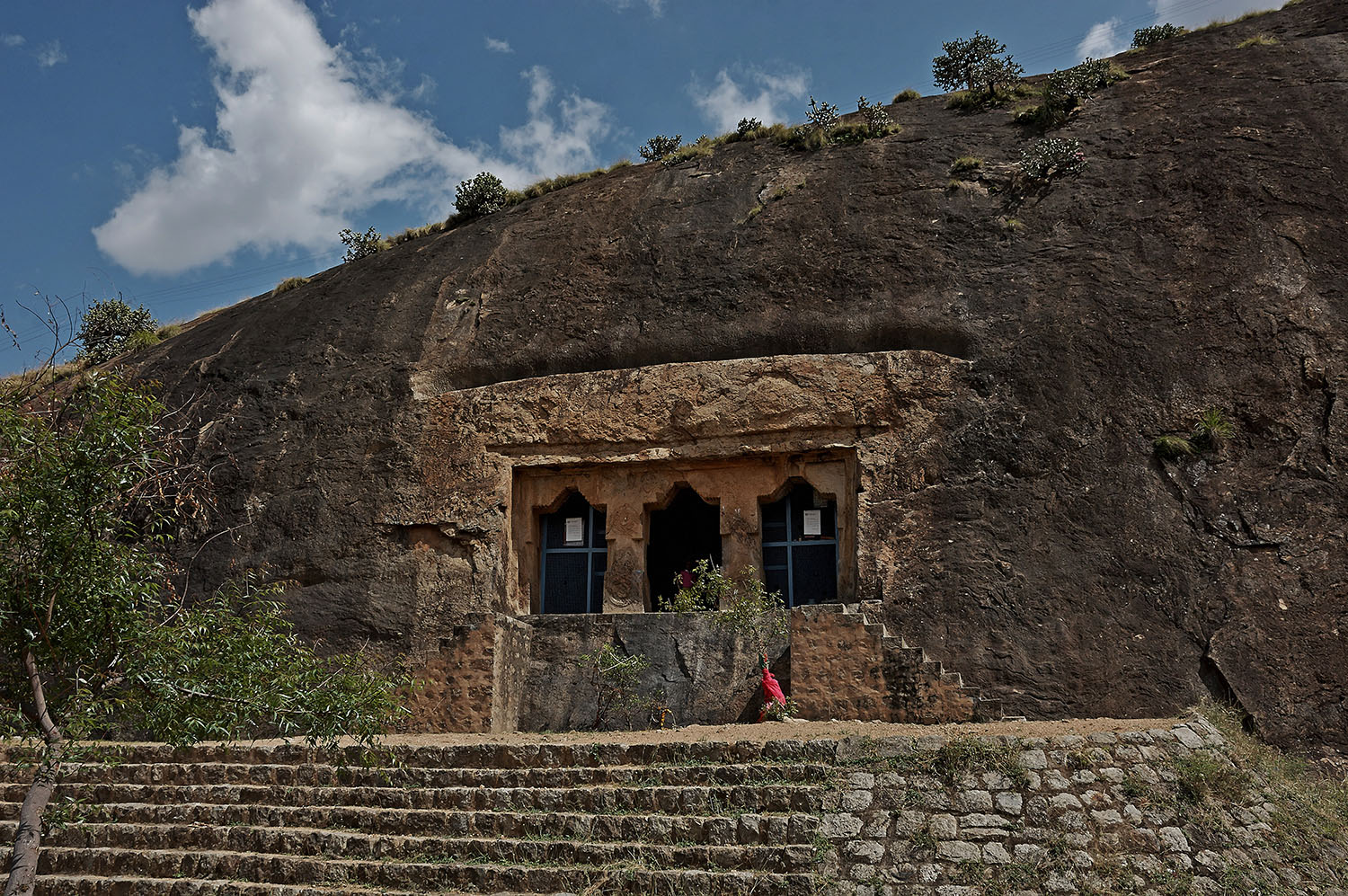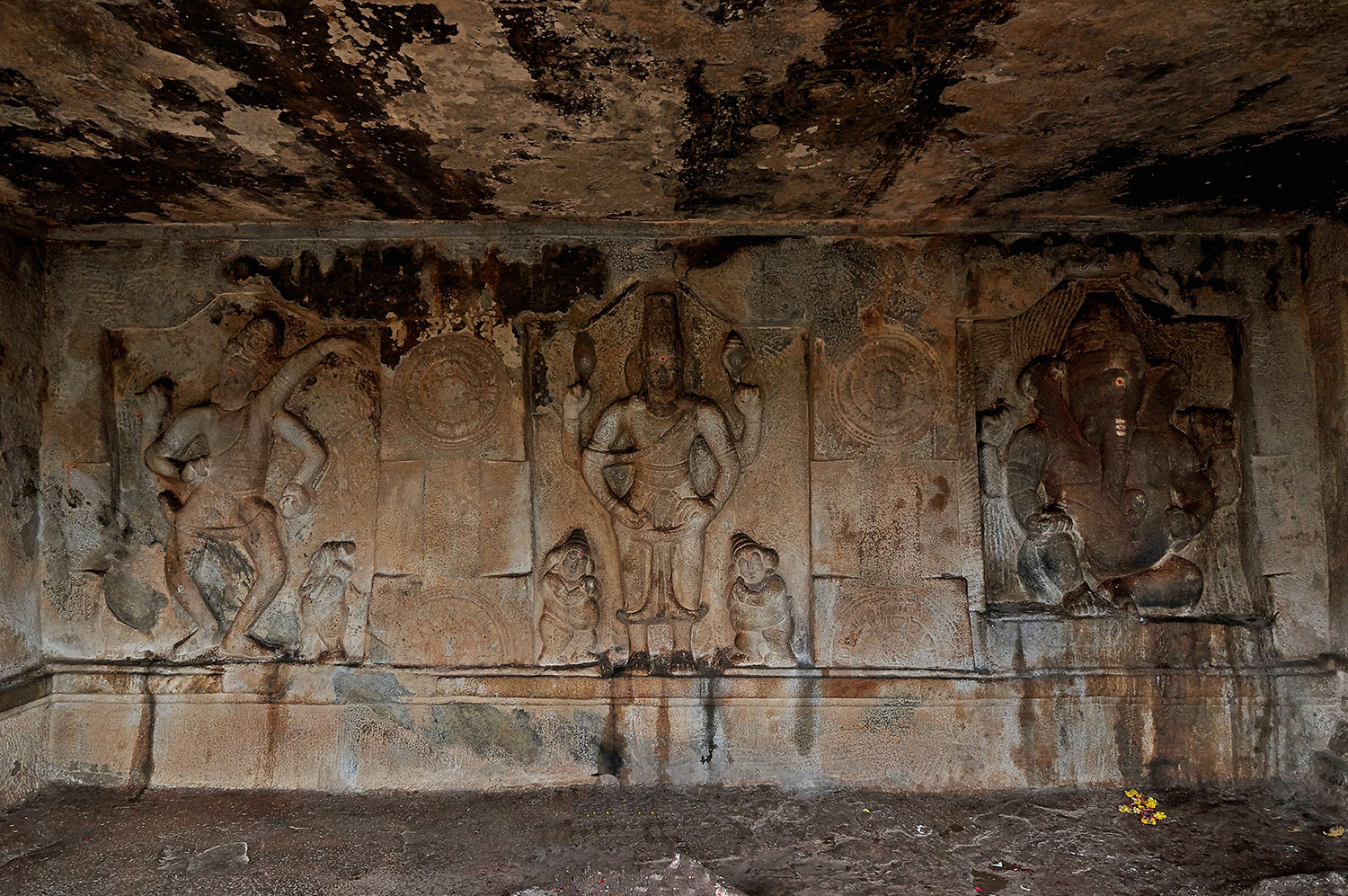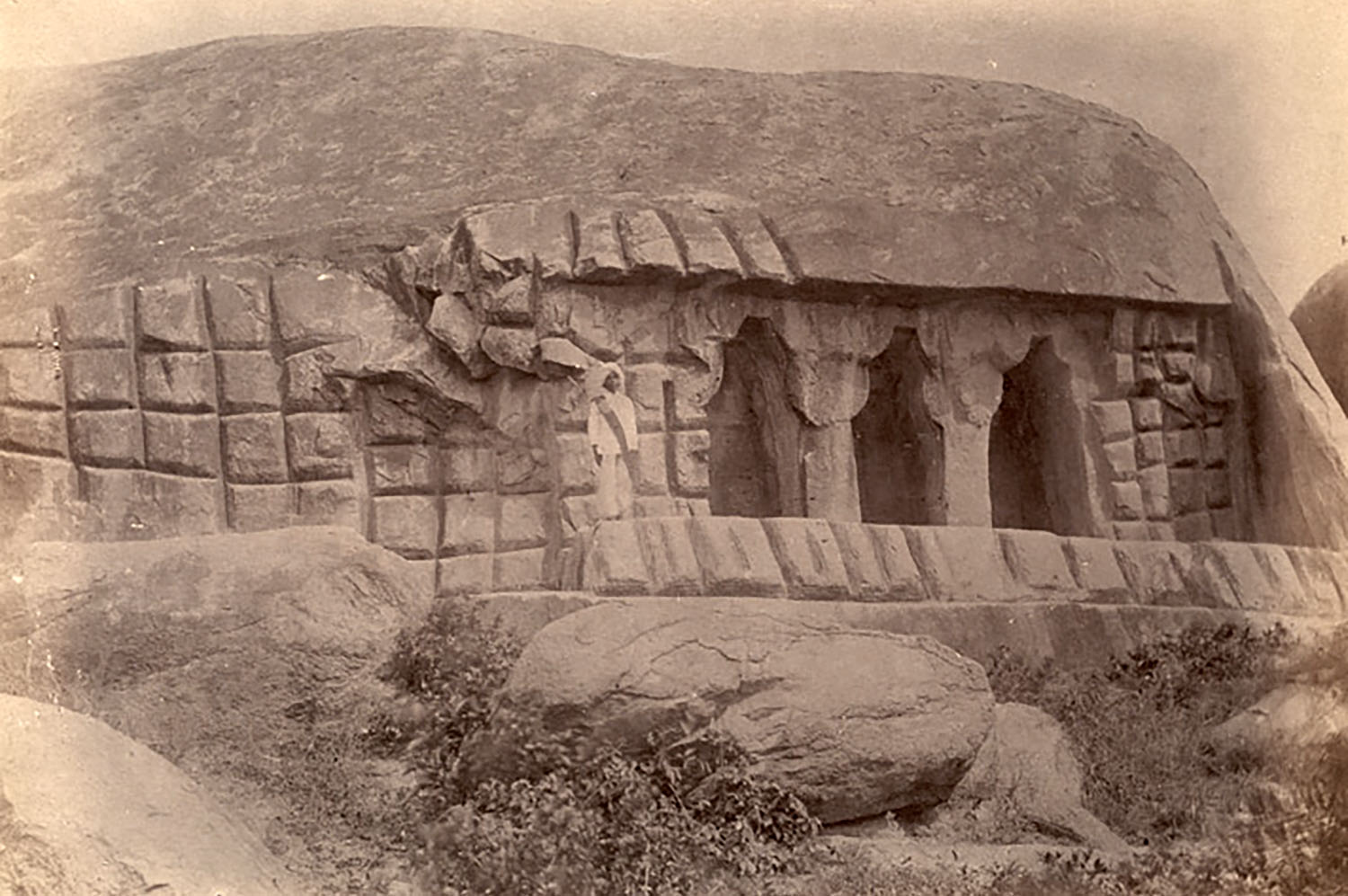ARTICLE
Thirumalapuram Cave Shrines
Two rock-cut shrines excavated during the seventh and eighth centuries CE, the Thirumalapuram cave shrines are located on a hillock in Thirumalapuram (also known as Varunachimalai) in the district of Tirunelveli, Tamil Nadu. The two shrines, which have identical façades, are located on the northern and southern sides of the hillock. The northern cave contains a lingam carved out of the rock, suggesting it was dedicated to Shiva, while the southern cave appears to have been left incomplete. The shrines provide important evidence of the movement and interaction of artistic styles through the region in the medieval period.
The completed northern shrine has an entrance porch or mahamandapa followed by a rectangular pillared ardhamandapa and a sanctum or garbhagriha, excavated into the lateral wall rather than the back wall of the cave. The entrance to the sanctum is flanked by sculptures of dvarapalas, which had become commonplace in south Indian temple architecture by the eighth century; a Nandi faces the lingam. The façades and the pillars appear to be influenced by the shrines of the Pallava court. Lotus medallions are present in the cubical portion of the pillar shafts as well as in the pilasters that frame the reliefs on the inner walls. The underside of the bracket capitals are decorated with scroll ornaments. Carved in relief panels are images of Ganesha and a Trimurti scheme featuring a four-armed Vishnu flanked by ganas; a dancing Shiva, also similarly flanked; and Brahma, with two of his four faces shown in profile. This representation of the three deities may also be inspired by Pallava models.
The northern cave shrine was also decorated with frescoes, dated to the eleventh to twelfth centuries CE. They depict dancing ganas, the group of men in floral robes, and a celestial figure riding a lion (possibly Durga) near the Brahma relief. These paintings reflect influences from the mural traditions of Sittanavasal and Thanjavur.
Although the Thirumalapuram cave shrines’ original purpose is unknown, an inscription from the eleventh century CE, attributed to the Pandya king Maravarman Vallabhadeva, recorded that religious ceremonies and rituals were regularly performed at the site. As of writing, the shrines have attracted little scholarly attention, and their sculptures and frescoes are in a state of neglect.
Bibliography
Our website is currently undergoing maintenance and re-design, due to which we have had to take down some of our bibliographies. While these will be re-published shortly, you can request references for specific articles by writing to hellomapacademy@map-india.org.









